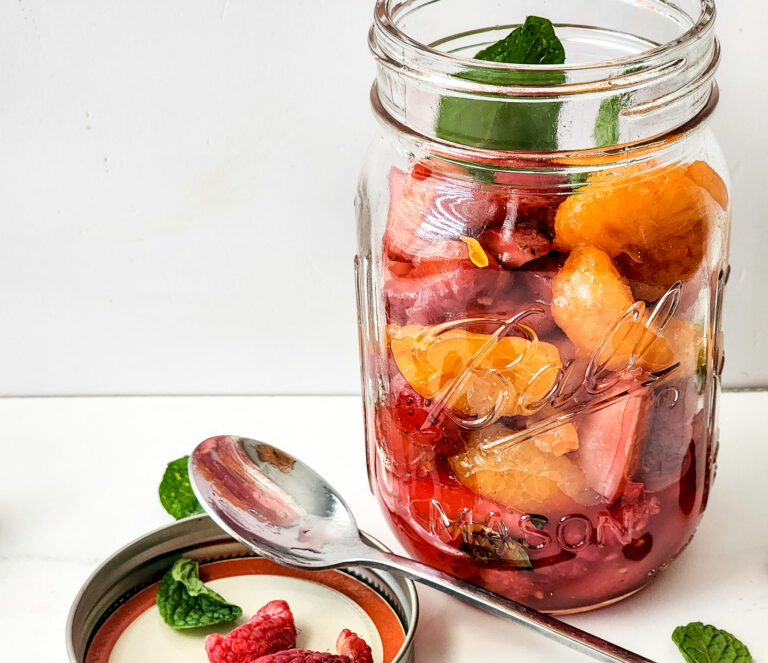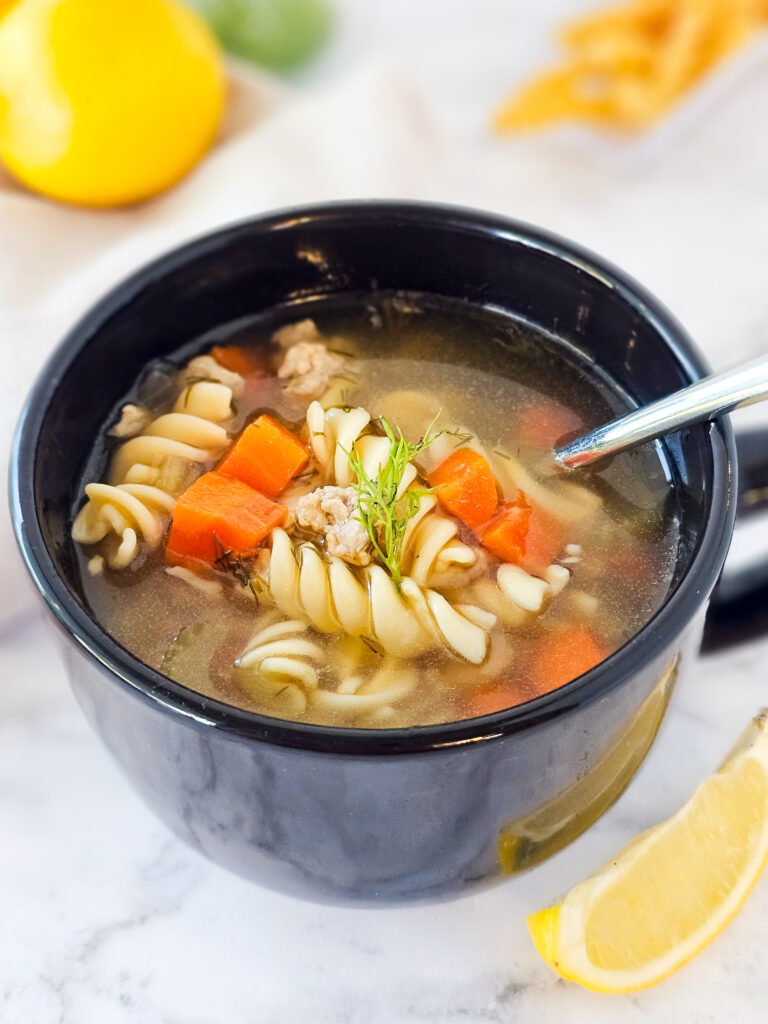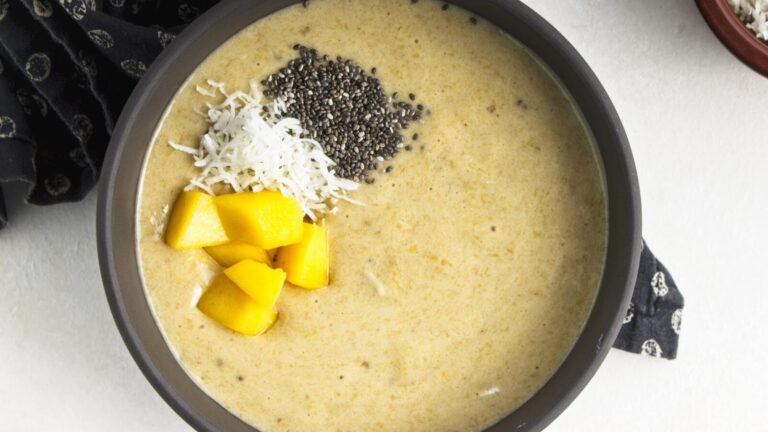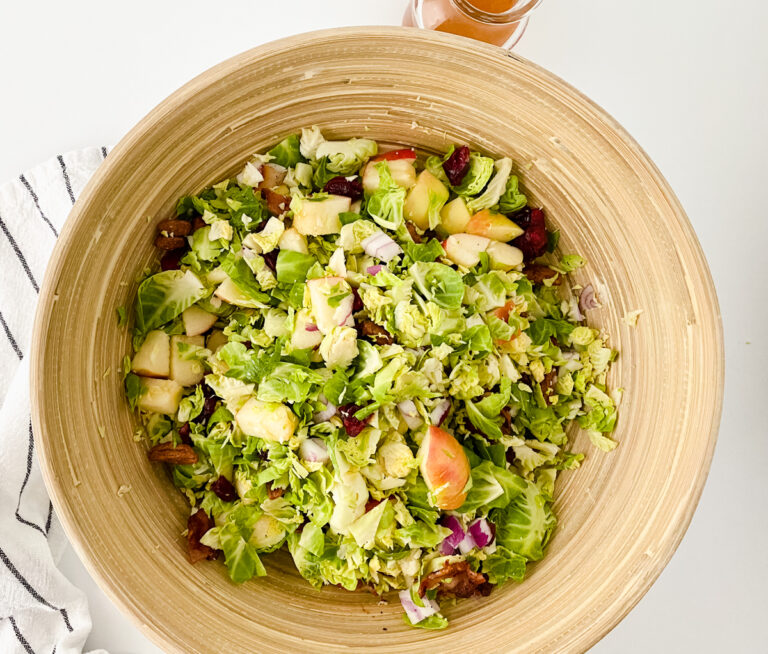This post may contain affiliate links.
Homemade grape juice is easy to make with this simple method!
Just smelling the grape juice simmering on the stove is enough to bring back memories of childhood but with a grown-up twist.
While this article specifically presents a recipe for concord grape juice, any grape can be substituted. Just make sure you love the grape’s taste before using it for juice. That taste is the basis for your end product, and it’s best not to add too much sugar.
Guide on Making Grape Juice
Equipment
- Large Stock Pot
- Potato Masher
- Metal Strainer (that fits into your stock pot)
- Cheese Cloth (enough to line your strainer)
- Large bowl or second stock pot for straining
Ingredients
- 6-10 cups Freshly Picked Grapes Removed from stems – Though various grapes can be used, we prefer fresh, home-grown Concord grapes. Concord grapes are easy to grow and make a rich, purple juice that rarely needs anything added.
Instructions
- Place grapes (removed from stems) into your large stock pot. The amount you use is flexible, but stay below 2/3 the height of your pot.
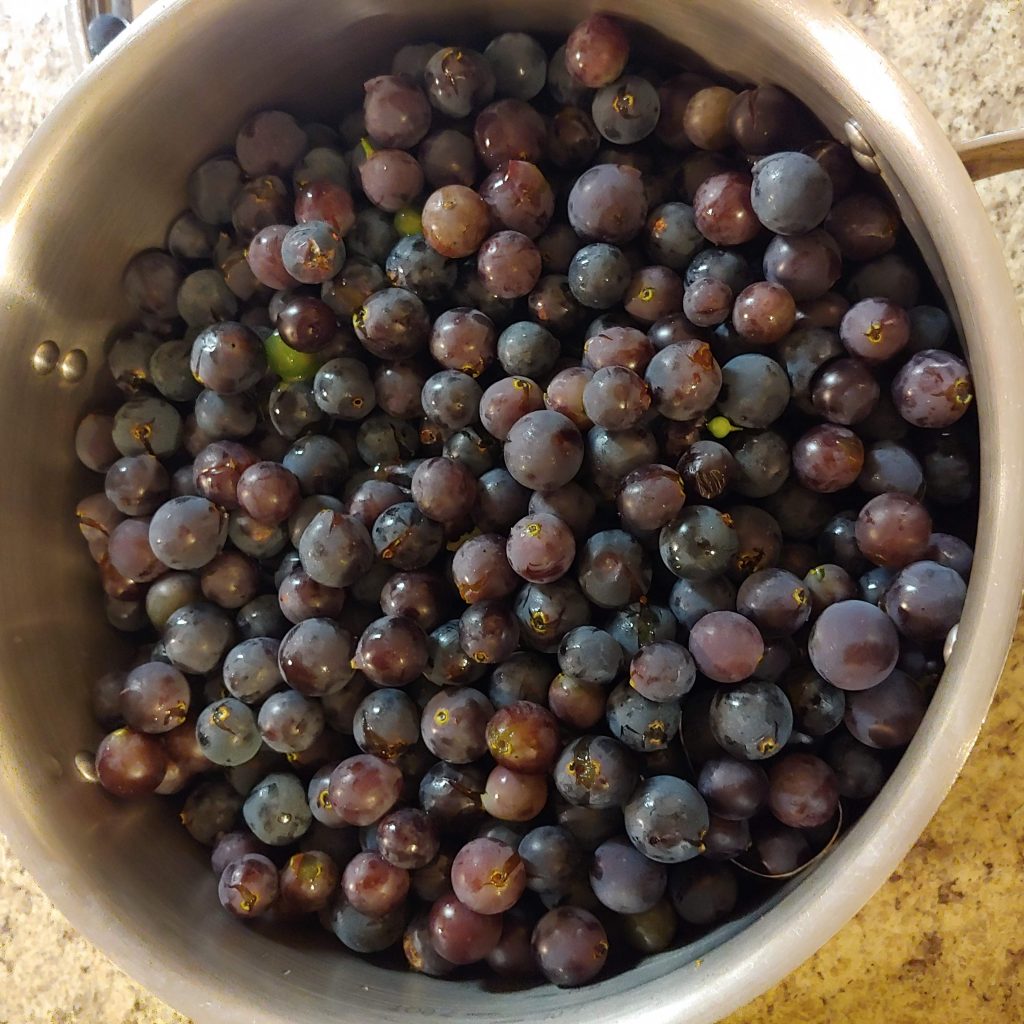
- Crush the grapes using a potato masher or similar tool.
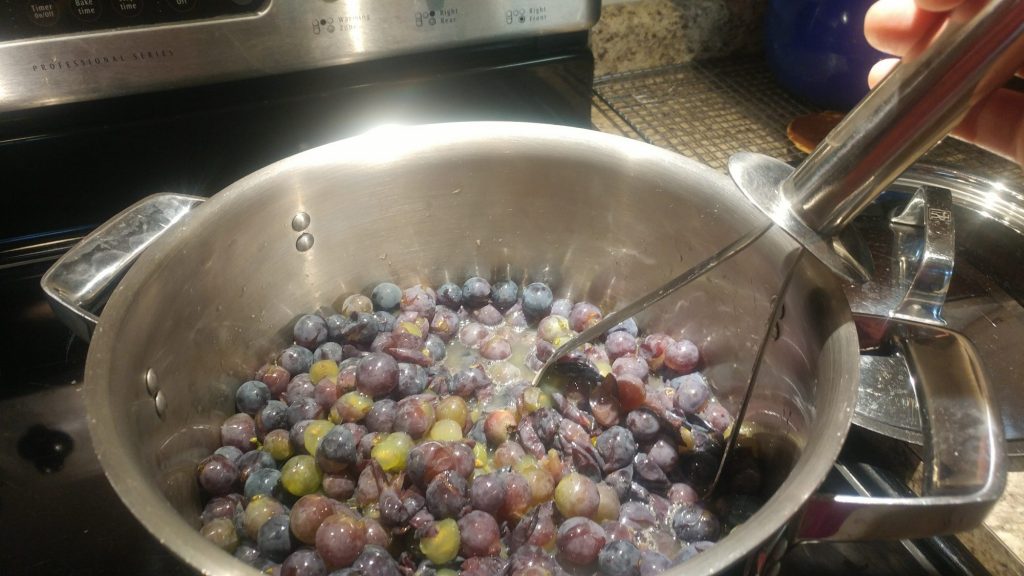
- Add just enough water to the stock pot to cover the crushed grapes.
- Bring the grapes and water to a boil over medium-high heat.
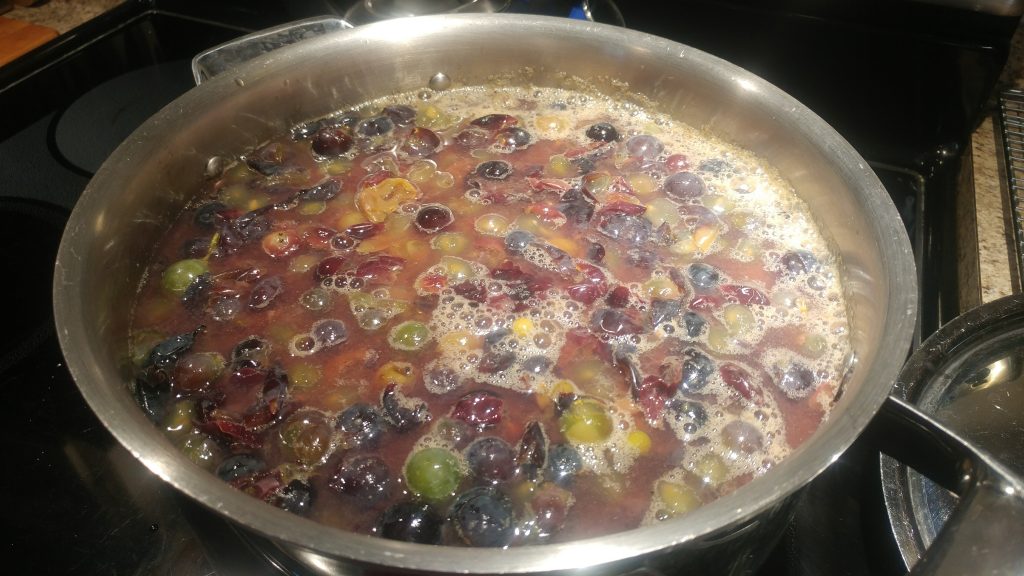
- Reduce heat to low and simmer grapes for 30 minutes.
- Place the strainer, lined with cheesecloth, into another large bowl or a second large stock pot.
- Pour the grapes and water into the strainer and allow the juice to flow into the other pot/bowl.
- Place the pot/bowl and strainer full of grape pulp into the fridge to continue draining for 24-48 hours.
- Remove and discard or compost the grape pulp.
- Carefully pour the grape juice back into the first stock pot (cleaned). Stop when you reach the bottom of the juice and any sediment that has gathered (you are basically decanting the juice here).
- Enjoy! (or preserve for later) Note: If your grape juice turns out thicker than you like, add more water when serving, or mix with seltzer for an awesome homemade soda!
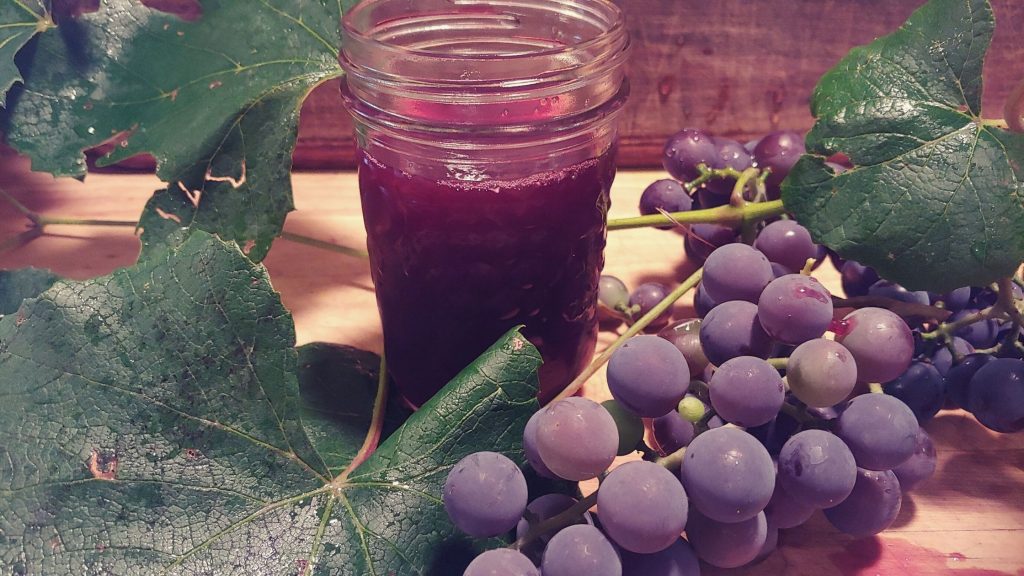
How to Can Grape Juice
You can use a hot water canning method to can grape juice and make it last up to a year. We use the grape juice canning method found in The Ball Complete Book of Home Preserving.
I summarize the method below, but if you are new to canning we highly recommend picking up this book or consulting the beginner’s guide to canning to better understand the method and what equipment you’ll need.
- Bring your grape juice back to 190 degrees (do not boil).
- Keep at this temp for 5 minutes.
- Pour into clean canning jars, leaving a quarter-inch headspace.
- Place lids and rings on jars, and place them into your hot water bath canner.
- Bring water to a boil and keep at a boil for 15 minutes.
- Allow to cool, then remove the jars and let them cool on the counter before storing.
Benefits of Grape Juice
Some research has shown that red and purple grapes may also have health benefits. This is because of the antioxidants, specifically the “flavinoids” in grapes.
You can read more about the health benefits of grape juice here, but in general, you can think of grape juice as an alternative to red wine for similar benefits. Just as a glass of red wine can have beneficial impacts (think heart disease prevention and lowering cholesterol).
Some research has suggested that the benefits of grape juice may linger even longer in the body than red wine.
Should you sweeten grape juice?
Many homemade grape juice recipes will include sugar in the ingredients list. And yes, you can sweeten your grape juice, especially if your grapes are not as sweet.
But if you prefer a rich, natural-tasting grape juice without added sugar, then you should opt not to sweeten. ultimately the choice is up to you. Concord grapes are plenty sweet, and skipping the sugar allows you to taste their true flavor.
If you think your grape juice would benefit from added sugar, you can stir in a cup while the juice is heating (step 10). You could also add another sweetener, like honey or maple syrup, when enjoying the grape juice rather than making it. That way, each glass can be made to order!
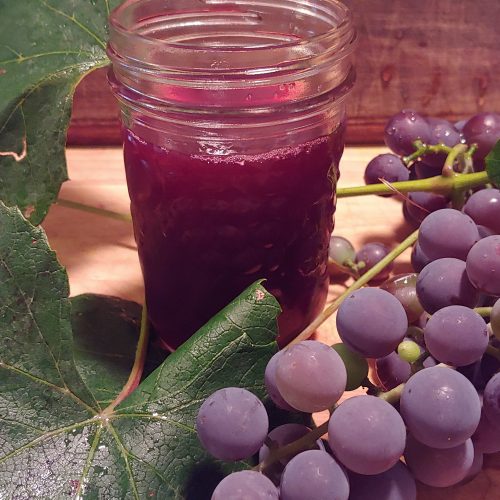
How to Make Grape Juice
Equipment
- Large Stock Pot
- Potato Masher
- Metal Strainer (that fits into your stock pot)
- Cheese Cloth (enough to line your strainer)
- Large bowl or second stock pot for straining
Ingredients
- 6-10 cups Freshly picked grapes Removed from stems
Instructions
- Place grapes (removed from stems) into your large stock pot. The amount you use is flexible, but stay below 2/3 the height of your pot.
- Crush the grapes using a potato masher or similar tool.
- Add just enough water to the stock pot to cover the crushed grapes.
- Bring the grapes and water to a boil over medium-high heat.
- Reduce heat to low and simmer grapes for 30 minutes.
- Place the strainer, lined with cheesecloth, into another large bowl or second large stock pot.
- Pour the grapes and water into the strainer and allow juice to flow into the other pot/bowl.
- Place the pot/bowl and strainer full of grape pulp into the fridge to continue draining for 24-48 hours.
- Remove and discard or compost the grape pulp.
- Carefully pour the grape juice back into the first stock pot (cleaned). Stop when you reach the bottom of the juice and any sediment that has gathered (you are basically decanting the juice here).
- Enjoy! (or preserve for later)
Notes
Carrie Williams Howe is an educational leader by day and an aspiring homesteader by night and weekend. She lives on a small homestead in Vermont with her husband, two children, and a rambunctious border collie. She blogs about her family's homestead life at The Happy Hive.

